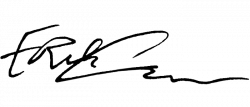
A tracking & automation webapp for glass production
Cardinal Glass manufactures glass for commercial buildings, solar panels, and other manufacturing and industrial applications. Their facility in Georgia produces a special type of glass called “Specials” which are custom runs of glass that are cut to different shapes and require stamping with a logo before tempering (a method of “hardening” the glass for safety).
Each run of panes of glass needed logos of their various customers imprinted on each pane. Keeping track of which logo to use and their orientation, position, and direction was becoming a major problem and large, costly mistakes were being made. Applied Imagination was hired to create a web-application which would solve this problem.
We studied the problem with key stakeholders to understand the issues and vet out potential solutions. We spent many days around whiteboards but eventually we settled on a solution which would allow the manufacturing manager to “program” the different configurations into the system. This required a lot of standardization of logos and input data which we accomplished first.

We then had to standardize their loading and unloading processes in order to make the rules consistent making it possible to have standard logo rules.
We then standardized the logo orientation formats and came up with a simple way to communicate that to line staff.


We built a webapp for the line manager and the line staff to interact with that looked like this. There was a station for the loaders and a portal for the unloaders.

Screens for the loader and unloader staff were made to be easy to read and understand at a glance. They were kept very simple to simplify maintenance.

We built a management control panel so that the system could be set up, current and historical status could be viewed, and diagnostics could be presented to ensure proper operation of the system.
Rule set Management – We built editing pages for rulesets with diagrams to make it easier for users and simplify training.



When we completed the project we provided Cardinal with complete documentation explaining the system and how it should be maintained and supported. We continued to support the system for the next 7 years while it was in operation.

Every team member signs their name to each project to show they stand by it.


